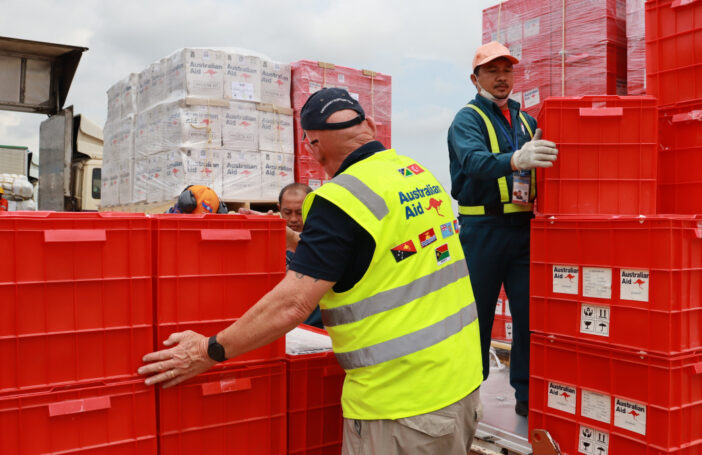According to new DFAT instructions, apparently agreed to late last year, but still not released, aid management will be simplified from 1 July 2014.
As the internal memo below shows, there will be four main changes. First, the threshold level at which rigorous design and evaluation procedures will be required will increase from $3 to $10 million. (But only for “low risk” projects so that small but risky projects should still be subject to the tougher rules.)
Second, while country strategies (now to be called “Aid Investment Plans”) will continue to be produced, the complementary (and always confidential) country situational analyses will be dropped.
Third, delivery strategies (now to be called Sector Investment Plans) will be optional rather than mandatory.
And fourth, the annual program performance reviews will only be retained for the top 12-15 programs. Some 33 were produced (or at least published) last year. For small programs a streamlined process will be produced.
There have been calls for business process simplification since the 2011 Independent Review of Aid Effectiveness, which drew attention to excessive levels of paper work in the aid program. The Review concluded: “There is too much paperwork, leading to lengthy processing times.” And indeed, our 2013 Aid Stakeholder Survey found that slow decision making was perceived as the aid program’s second most serious weakness (after staff turnover). Participants found the transaction costs involved in the aid program to be medium or high and constant or rising.
On project evaluations, the Independent Review noted that many were found by AusAID itself to be of poor quality, and that a significant number could simply not be found. It called for fewer but better evaluations.
These reforms are certainly in line with the Aid Review’s recommendations. But how radical is the lifting of the threshold from $3 to $10 million? One would expect it to hit the Pacific the most, since a region of small countries will be a region of small projects. Fortunately, we’ve just collected a lot of data from the AusAID (now DFAT) website in the course of our recent transparency audit. We found 114 projects listed for the Pacific with a cumulative value of $1.7 billion. The average project size was $14.7 million. 43 of these projects (38%) had a project size greater than $10 million (cumulative value $1.4 billion; average size $32.3 million). 86 of the projects (75%) had a project size greater than $3 million (cumulative value $1.6 billion; average size $19.1 million). Thus, in the Pacific (and ignoring that the new rules only apply to low risk projects) the new rules will halve the number of projects subject to rigorous procedures, but only reduce by 15% the volume of aid subject to the same.
The increase in the threshold, and the other changes as well, seem sensible to me, and indeed long overdue.
The rule changes say nothing about transparency, which in this context is a good thing. All projects should be subject to the same transparency requirements, no matter how small. Indeed, with increased deregulation, even sensible increased deregulation, transparency becomes all the more important.
*****
DFAT memo on simplifying the aid management system
The Integration Steering Committee (17 December) endorsed a simplified aid management system that will take effect from 1 July 2014. Key changes to the system are that:
- A streamlined process will be introduced for the development of low risk investments under $10 million. This will enable programs to proceed directly to investment design, without being required to prepare a concept.
- The threshold for quality assurance of designs will be raised from $3 million to $10 million for low risk investments. This means processes such as peer review and appraisal will no longer be required for such investments.
- A streamlined annual performance assessment process (replacing QAIs) will be introduced for low risk investments under $10 million.
- The threshold for independent evaluation of low risk investments will be raised from $3 million to $10 million. This will enable programs to conduct fewer, better quality evaluations.
- A single Aid Investment Plan will set the direction of Australia’s aid program in a country or region. A stand-alone situation analysis will no longer be required.
- Sector Investment Plans will supersede delivery strategies. These will not be mandatory, although may be useful planning tools for programs with large or complex sectoral investment portfolios.
- The annual process for assessing the overall performance of Australia’s aid program in a country or region will be streamlined for all but the most significant programs (e.g. top 12-15).
The Strategic Programming Committee will remain the key mechanism for senior departmental oversight of high value and high risk investments and plans for major country and regional programs.
Experienced aid management staff at post and in geographic areas will be the primary source of support for senior decision-makers. Contracting and Aid Management Division will perform regulatory and quality assurance roles and provide supplementary support to decision-makers if required.





These aid management changes are perfectly sensible considered in isolation. There’s no question that deregulation was needed. But, in their context, the changes carry some risks that will need to be watched. They coincide with the integration of AusAID into DFAT and the likely (still unquantified) loss of many experienced and skilled aid professionals. There must be some risk that the lifting of quality controls for all activities under $10 million, which is a fairly high threshold for grant-funded activities, will lead to two, linked outcomes. First, we could see increased program fragmentation as people face incentives to keep activities under the threshold. And second, we could see poor attention to activity quality on the part of people whose resource allocation decisions are influenced primarily by other factors. The changes will be a good thing if they result in greater attention to the quality of large or high-risk activities, but not such a good thing if they result in a proliferation of small, low-quality activities.